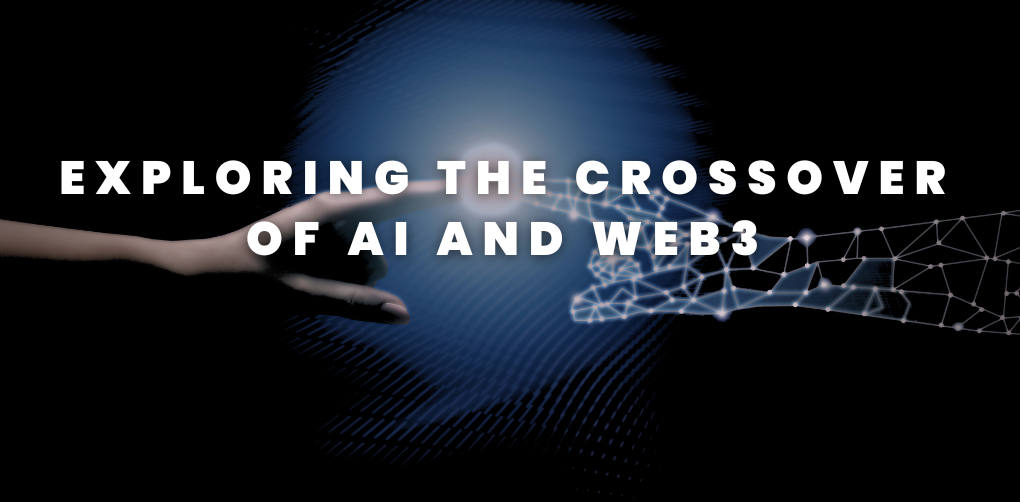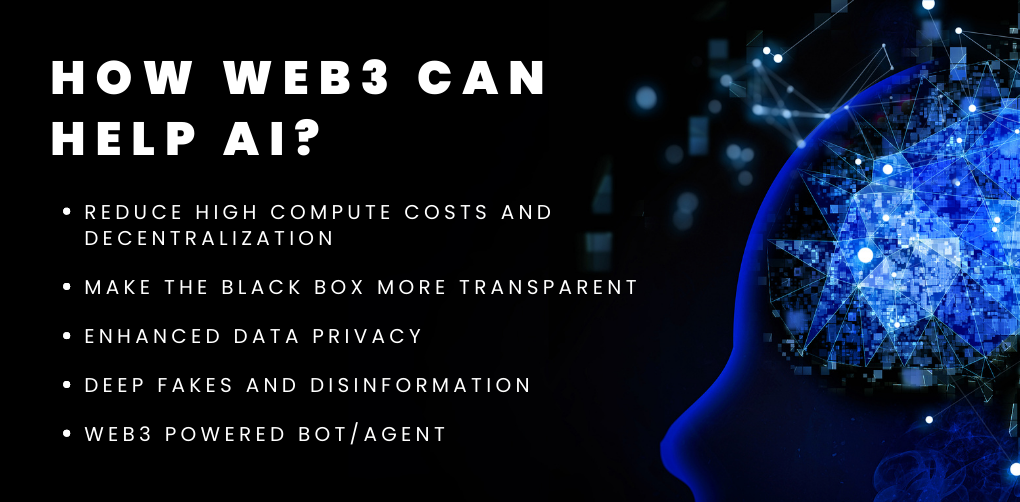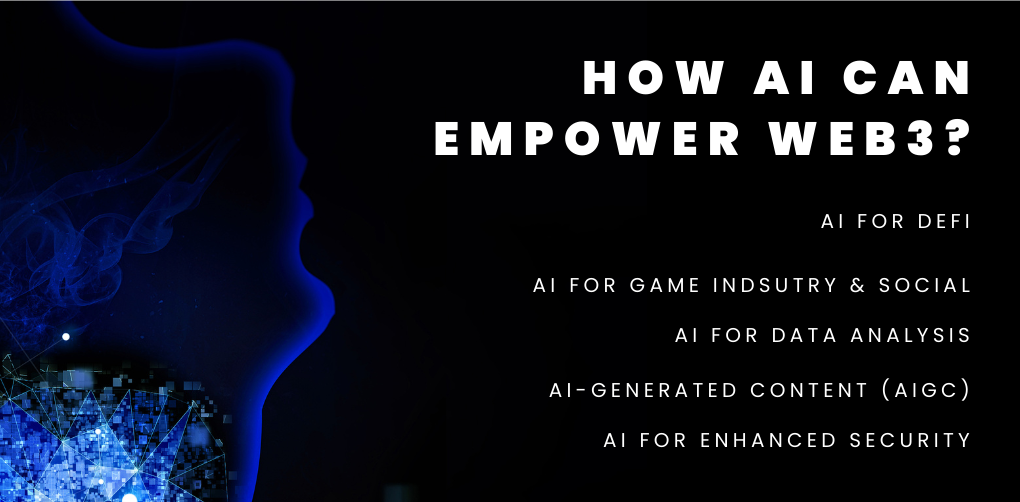Exploring The Crossover of Artificial Intelligence (AI) and Web3
Discover the immense potential in the unexplored synergy between AI and Web3 technologies, paving the way for groundbreaking advancements and exciting innovations.

1. When AI meets Web3
Artificial Intelligence (AI) is not a new concept, which has been a dominant force in the tech industry for years, with giants like Microsoft, Google, and Meta leading the way. On the one hand, the emergence of ChatGPT, Google's Bard, and Microsoft's Bing AI has further solidified AI's growing presence. OpenAI's ChatGPT as one of the fastest growing applications is captivating both the Web2 and Web3 communities at the beginning of 2023.
At the same time, Web3 is also a revolutionary technology that has gained significant traction in recent years. Its core principles of ownership, transparency, and decentralization have propelled its growth. Now, let's envision the powerful combination of AI and Web3. How do they complement each other, and what benefits can they bring? A lot of projects are trying to identify and explore the potential yet untapped synergy between AI and Web3 to overcome hurdles and foster mutual growth in the future.
2. How Web3 can help AI?
AI has indeed been around for a long time, but it still faces several challenges that impede its mass adoption. However, recent advancements like ChatGPT have brought forth new opportunities for AI applications. To understand how Web3 can address these challenges, let's explore them one by one.

2.1 Reduce High Compute Costs and Decentralization
Affordable infrastructure plays a crucial role in the success and scalability of any application, including AI projects. Currently, the physical infrastructure market is dominated by a few major players, such as AWS, GCP, Azure, Nvidia, and Cloudflare, who often operate with high-profit margins. However, the costs of computing and storage can be prohibitively high for many AI projects, e.g. ChatGPT costs an estimated 4M/training, and ~$700,000 per day in hardware.
Decentralized computing offers a potential solution, distributing tasks across a network of nodes to democratize access and reduce expenses. This shift may address concerns about centralization and pave the way for a more equitable and innovative AI ecosystem.
Let's explore how Web3, specifically the concept of DePIN (Decentralized Physical Infrastructure Networks), can address these affordability challenges by focusing on these key levels and solve the decentralization concern:
- A more competitive marketplace
DePIN leverages the decentralized nature of Web3 to create a more diverse and competitive marketplace for physical infrastructure resources. By opening up the infrastructure market to a broader range of providers, DePIN increases supply and encourages competitive pricing. This competitive marketplace drives down costs for AI projects, making them more accessible and affordable.
- Crypto-Economic design
Utilizing crypto-economic principles, DePIN optimizes resource allocation and pricing within its networks. By combining cryptography and economic incentives, DePIN can achieve efficient and balanced market dynamics.
- Overhead costs reduction
DePIN aims to minimize overhead costs associated with traditional infrastructure providers. Leveraging Web3 technologies like peer-to-peer networking and decentralized storage, DePIN reduces the need for intermediaries and streamlines resource allocation. The transparency of Web3 ensures optimal resource utilization and minimizes wastage, further reducing overhead costs.
- Decentralized AI
Similar to decentralized finance and social networks, the concept of decentralized AI holds the promise of censorship resistance and trustless AI. By decentralizing AI applications, data, and decision-making, users gain greater control and trust in the AI ecosystem.
With the maturing DePIN networks, it’s possible to make infrastructure costs more affordable and more decentralized for AI projects:
- Decentralized storage providers: Filecoin, Greenfield, Arweave, Storj, etc.
- Web3 computing platforms: e.g. Render network, Gensyn.AI, Together.AI

2.2 Make the Black Box More Transparent
In the current AI landscape, the lack of transparency resembles a black box, where big companies' closed-door approach hinders understanding and visibility into AI processes. To foster a more inclusive and accountable AI environment, it is crucial for end users and developers to participate actively by contributing data and algorithms while retaining ownership and transparency over AI system inputs and outputs.
Transparency and ownership go hand in hand, as both are essential for establishing trust and accountability in AI systems. When end users and developers have visibility into the AI processes, they can better identify biases, address fairness concerns, and hold AI systems accountable for their decisions.
Furthermore, Web3's decentralized nature allows for the creation of platforms and protocols that promote openness, transparency, and ownership. By leveraging blockchain technology, decentralized storage, and smart contracts, Web3 enables the development of AI systems where input and output are transparent, and ownership rights are secured.
By putting AI on-chain, the AI system can achieve Complete Verification. In other words, the black-box AI is now auditable via the blockchain, including the model architecture, the model weights, and the model inputs.
2.3 Enhanced Data Privacy
AI systems often require extensive training on vast amounts of data, including access to specialized information databases. The challenge of sharing sensitive data while ensuring privacy is a critical consideration for AI. Web3's zero-knowledge protocols offer a viable solution by enabling the anonymization of sensitive information and utilizing zero-knowledge proofs to verify authenticity without compromising privacy. This approach paves the way for secure and privacy-preserving AI development and fosters trust among data contributors, ultimately driving innovation and advancement in the field of AI.
Worldcoin is building the world's largest identity and is spearheading a groundbreaking proof of humanity solution by leveraging users' biometric information and zkML. By now, there are almost 1.9M registrations across the world. Their innovative approach involves zkML to empower users to generate their Iris code in a permissionless manner. As the algorithm for generating the Iris code evolves, users will have the ability to download the updated model and autonomously generate a proof, eliminating the need to visit an Orb station.
Private AI uses AI models to enhance user experience in social network dApps. There are two ML models: one is based on TensorFlow to detect malicious content and protect users from malicious attacks, and another recommends social media content based on user preferences. As the model training occurs within the browser, user data is stored locally, ensuring a certain level of data privacy.
2.4 Deep Fakes and Disinformation
Content authenticity plays a vital role in ensuring the trustworthiness and reliability of media content. However, the emergence of advanced AI techniques has posed significant challenges to maintaining content authenticity. The recent realistic deep fakes and AI-generated song is a good example of how fake content leverages powerful AI.
Why do we need Web3 for this? Envision a breathtaking realm where every fragment of content possesses its own cryptographic signature and it’s totally verifiable, such as IPFS can leverage Merkle Tree to provide proof of file modification. Lens Protocol and Mirror are decentralized social media platforms employing cryptographic public addresses, enhancing content verification and trust.
2.5 Web3 powered Bot/Agent
Monetizing bots, agents, and assistants is indeed a popular and evolving field in Web3-powered AI. By leveraging OpenAI's technology along with other open-source or self-developed tools like TTS (Text to Speech), it is possible to create specialized robots that outperform ChatGPT in specific domains.
- Stability.AI: Powering text-to-image generation, aiming to be metaverse AI and providing seamless service to developers.
- Utiliti.AI: is building an intelligent web3 enterprise development platform to connect any tech stack to blockchain networks with enterprise-grade APIs and SDKs.
- Polygon Copilot: is a user-friendly AI guide powered by GPT-4. This innovative solution aims to deliver swift responses, personalized onboarding experiences, code snippets, invaluable insights, and detailed analytics through its interactive "Asking" feature.
- Alchemy AI: is another similar use case with ChatGPT to empower Web3 developers.
- Opera Aria: a native browser from Opera and powered by Opera’s own Composer AI engine, Aria connects to OpenAI’s GPT services and provides product support for Opera browsers.
3. How AI can Empower Web3?

3.1 AI for DeFi
In crypto-enabled finance (DeFi), automated traders experience a better UX as they don’t need to worry about insolvency and withdrawal issues. Also, We can leverage ML to automatically optimize the parameters and make automated trading strategies. Pionex can provide AI-based trading strategies.
3.2 AI for Game Industry and Social
In fully on-chain games, AI players can benefit from a better UX because they don’t need to worry about getting de-platformed. AI can rebalance the in-game economics and even can breed more AI-based gameplay with practical game assets.
In decentralized social media, AI participants have the opportunity to contribute meaningfully to conversations without worrying about upsetting the moderators. At the same time, AI can help optimize the recommendation of the advertisement.
EIP-7007 is an EIP by @drCathieSo_eth that provides an interface to use zkML to verify whether or not the AI-generated content for an NFT is true.
rct AI is providing AI solutions to the game industry and building the true Metaverse with AI-generated content, and Chaos Box is the core.
Alethea.ai is a decentralized protocol that introduces smart avatars, powered by AI, to engage with individuals. The platform pioneers a novel NFT standard, known as intelligent NFT (iNFT), that merges AI animation, voice synthesis, and generative AI features into NFTs.
PLAI labs is a social network based on AI and Web3, which has two products: Champions Ascension games and the AI protocol platform.
3.3 Data Analysis
AI can assist in processing and analyzing large volumes of data generated within Web3 infrastructure. By leveraging machine learning (ML) algorithms, AI can extract valuable insights, detect patterns, and facilitate data-driven decision-making processes.
- Dune Analytics supports Analyzing any Dune dataset using natural language.
- Space and Time also support running natural language queries with prompt-to-SQL and generate instant charts and dashboards.
- Flipside built NFT Deal Score, an app that pairs ML with blockchain data (available through Snowflake Data Shares) to determine the expected value of NFT collections and their various traits and trends. Flipside team also built an app called Trails to identify and incentivize target behaviors by leveraging ML.
- Blaze AI is a tool that uses Flipside’s comprehensive blockchain data through Snowflake to analyze consumer trends and wallet activity. This article reveals more details by pairing AI and blockchain data.
- Arkham is a crypto intelligence platform that systematically analyzes and deanonymizes blockchain transactions, showing users the people and companies behind blockchain activity, along with data and analytics about their behavior. To generate intelligence at scale, Arkham uses Ultra, a proprietary AI-powered algorithmic address-matching engine. And Arkham is the 32nd launchpad project on Binance.
3.4 AI-Generated Content (AIGC)
From Professionally Generated Content (PGC) to User Generated Content (UGC), a new era has dawned with the rise of AI-Generated Content (AIGC). AI is dynamically reshaping the content economy, enabling us to harness its power to swiftly generate compelling content and magnify its impact like never before. Here is a comprehensive list of awesome AIGC.
3.5 Enhanced Security
AI agents can be trained to audit code, identify vulnerabilities and test blockchain networks can revolutionize Web3’s security landscape. These agents can continuously monitor and enhance the ecosystem’s robustness, ensuring a safer and more reliable environment for users.
4. Looking Forward
The convergence of AI and Web3 has opened up exciting possibilities for the decentralized economy. Within the context of Web3 infrastructure, AI plays a multifaceted role in empowering the ecosystem. Its contributions span various aspects, including enhancing scalability, refining consensus mechanisms, optimizing data availability, and facilitating the efficient execution of smart contracts.
AI's impact extends to improving user experiences, content generation, identity verification, and safeguarding privacy. Additionally, AI brings valuable enhancements to decentralized applications (dApps), enabling advanced AI-driven governance systems, refining recommendation engines, bolstering fraud detection mechanisms, and tailoring personalized user experiences. Moreover, AI's applications in Web3 cover areas like data indexing, analytics, oracles, and secure payments, further enriching the ecosystem's functionalities and utility.
As AI and Web3 technologies continue to progress and interweave, we can expect to witness a proliferation of innovative solutions, strategic collaborations, and fruitful partnerships. Harnessing the combined power of AI and Web3, the decentralized economy stands poised to unleash a new wave of possibilities and transformative developments in the digital landscape.
About NodeReal
NodeReal is a one-stop blockchain infrastructure and service provider that embraces the high-speed blockchain era and empowers developers by “Make your Web3 Real”. We provide scalable, reliable, and efficient blockchain solutions for everyone, aiming to support the adoption, growth, and long-term success of the Web3 ecosystem.
Join Our Community
Join our community to learn more about NodeReal and stay up to date!
